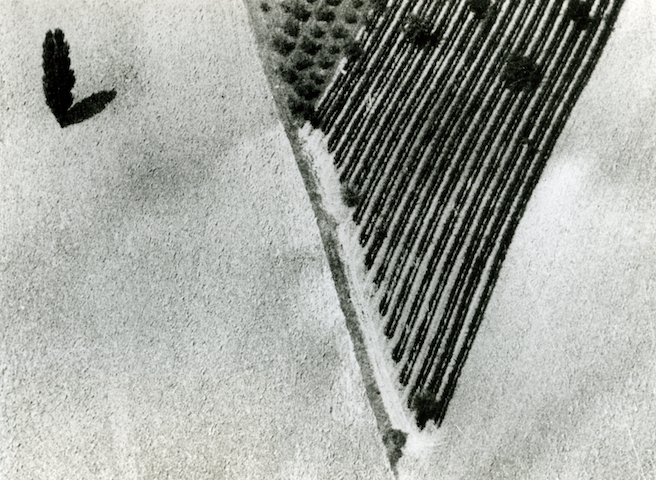Mario Giacomelli
During the course of his career Mario Giacomelli developed a personal approach to the lyrical power of photography, concentrating on major life themes such as the passage of time, memory, the earth, suffering, and love. Giacomelli’s discovery of the camera as an ideal expressive tool took place on Christmas Day in 1953, when he took his first photographs on the beach at Senigallia, using a Comet Bencini he had acquired the day before. Among the results is L’approdo (The Landing), an image of the shoreline lapped by a wave that resembles a brushstroke in motion. Following his early attempts, Giacomelli went on to develop photographic series in the form of stories told through images. The photographs in the collection of the Castello span the artist’s entire activity as a photographer, from his early work through the 1990s. For approximately nine years Giacomelli photographed a nursing home in Senigallia, a building he had frequented from the time he was young, when his widowed mother was working there. The images are divided into different series (1954–56; 1966–68 and 1981–83) and are usually identified with the title Verrà la morte e avrà i tuoi occhi (Death Will Come and Will Have Your Eyes), taken from a poem by Cesare Pavese. Seen in their totality, the different series can be considered a single work, unfolding over the span of the photographer’s lifetime. Giacomelli confronts the difficult theme of physical decay and imminent death with heightened awareness. The images are characterized by deliberately disjointed compositions, at the boundary of abstraction. “More than what I had before my eyes,” he has said apropos of these images, “I wanted to show what I had inside me.”
The Scanno series, 1957–59, emerged from the photographer’s encounter with the small village in Abruzzi of the same name. Giacomelli was struck by the almost fairy-tale-like atmosphere of the place; he photographed and printed the images in this series in such a way as to accentuate the contrast between the black clothing of people on the streets and the dazzling white of the pavements. The strongly graphic results deliberately negate any possible documentary value of the photographs, emphasizing instead the interpretation of Scanno as an interior landscape.
One of his most well-known series of works is Io non ho mani che mi accarezzino il volto (I Have No Hands that Caress My Face), 1961–63, set in the Bishop’s Seminary in Senigallia. The title is from a poem by Father David Turoldo, which Giacomelli read and which prompted him to visit the seminary. As with his other series, the photographer stayed on location for approximately one year, during which time the young priests became accustomed to the presence of both him and his camera. The photographic sequence begins on a snowy day and is taken at slow speed, capturing the seminarians during a moment of play. These photographs convey the enchantment of a space that is profound and yet timeless. Giacomelli’s open work consists of landscape studies, which he began in the mid-1950s. As has been noted in the critical literature, his landscapes are characterized by a highly personal organization of the image, centered on the progressive disappearance of the horizon. The formal layout and geometric purity of the images contrast with the attention given to the traces of human labor impressed on the ground and the photographer’s interest in the memory and history that they contain.
[MB]

